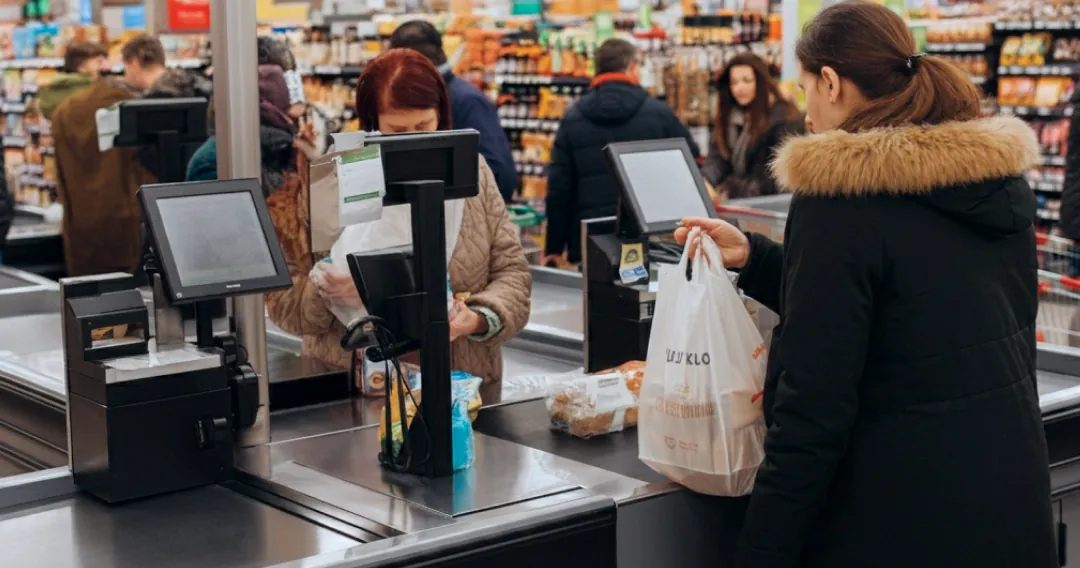The Banana Trick Explained: A Produce-Sized Problem
The banana trick is surprisingly simple. A shopper takes an expensive item, often meat or electronics, and rings it up as bananas or another cheap produce item at the self-checkout. Why bananas? They’re typically one of the least expensive items in a grocery store, often priced under $1 per pound. So when a shopper rings up a $20 steak as bananas, they might end up paying just a dollar or two.
The Wider Context: Self-Checkout and Shrinkage
The banana trick is just one example of how self-checkout systems have inadvertently opened new avenues for theft. Retail shrinkage, which includes losses from theft, fraud, and errors, has been on the rise since the widespread adoption of self-checkout technology.
Stores with self-checkout lanes experience higher rates of shrinkage compared to those without. The ease and perceived anonymity of these systems seem to embolden some shoppers to try their hand at theft, even if they wouldn’t consider shoplifting from a human cashier.
Beyond Bananas: Other Self-Checkout Scams
While the banana trick might be the most well-known, it’s far from the only method used to cheat self-checkout systems. Shoppers have devised various techniques to outsmart these machines.
The Pass Around: A Slight of Hand
This technique involves passing items around the scanner without actually scanning them. It’s a simple but effective method that relies on the system’s inability to detect unscanned items that don’t change the weight on the bagging area.
The Switcheroo: Label Swapping
Some more daring individuals go as far as to swap barcodes or price tags. They might place a cheaper item’s barcode on a more expensive product, hoping the system (and staff) won’t notice the discrepancy.

Retail’s Response: Fighting Back Against Fraud
Retailers are actively combating self-checkout theft with a multi-faceted approach that combines advanced technology and human oversight. This strategy aims to close the loopholes that make tricks like the “banana scam” possible.
Technology Solutions: Smarter Systems
Many stores are investing in sophisticated AI and machine learning systems to detect unusual patterns at self-checkout. These systems can identify mismatches between scanned items and their expected weights, flagging potential fraud for review. Some retailers are even implementing computer vision technology that can visually identify products, making it much harder to pass off expensive items as cheap produce.
ThinkLP’s Exception-Based Reporting (EBR) and analytics tools play a crucial role in this technological defense. By analyzing transaction data in real-time, ThinkLP can identify suspicious patterns and alert loss prevention teams immediately. The platform’s ability to integrate with point-of-sale systems and e-commerce platforms allows for comprehensive monitoring across all sales channels, helping retailers spot and address fraudulent activities quickly.
Human Touch: The Strategic Return of the Attendant
While technology forms the backbone of anti-theft measures, many retailers are also increasing staff presence around self-checkout areas. These attendants serve a dual purpose: they assist customers with legitimate issues and act as a visible deterrent to potential thieves.
ThinkLP supports this human element through its Smart Audit solutions. Retailers can use the platform to design and implement targeted audits, ensuring that staff are properly trained and following best practices in monitoring self-checkout areas. The system’s dynamic assignment capabilities allow managers to schedule audits based on real-time needs, focusing human resources where they’re most needed.
Data-Driven Strategies: Leveraging Analytics
Beyond immediate prevention, retailers are using data analytics to understand patterns of theft and develop long-term strategies. ThinkLP’s comprehensive analytics suite allows loss prevention teams to visualize trends, identify high-risk periods or locations, and measure the effectiveness of their anti-theft initiatives.
By combining transaction data with incident reports and audit results, retailers can build a holistic view of their loss prevention efforts. This data-driven approach enables them to fine-tune their strategies, allocating resources more effectively and staying one step ahead of evolving theft techniques.
The Future of Checkout: Where Do We Go From Here?
As technology evolves, so too will the methods used to prevent theft. We’re likely to see more sophisticated systems that can accurately identify products without relying solely on barcodes or manual input.
The challenge for retailers will be to implement these new technologies without sacrificing the speed and convenience that drew customers to self-checkout in the first place. It’s a delicate balance between trust and verification.
While the banana trick might seem like a harmless prank to some, it represents a significant challenge for retailers and a moral quandary for society. As we move forward, finding ways to maintain the efficiency of self-checkout while promoting honesty and integrity will be crucial.
Explore ThinkLP’s Blog
Now that you know more about the banana trick, you can find additional insights on loss prevention and safety intelligence on ThinkLP’s blog. The blog features articles, case studies, and industry insights that provide practical tips and strategies for improving your loss prevention efforts.
Request a Demo
If you are interested in how ThinkLP’s software can support your loss prevention initiatives, we invite you to request a demo. Their Loss & Safety Intelligence Platform is designed to integrate with your existing operations, helping you reduce risks and improve efficiency. Reach out today to learn how ThinkLP can assist your organization in optimizing its loss prevention strategy.


